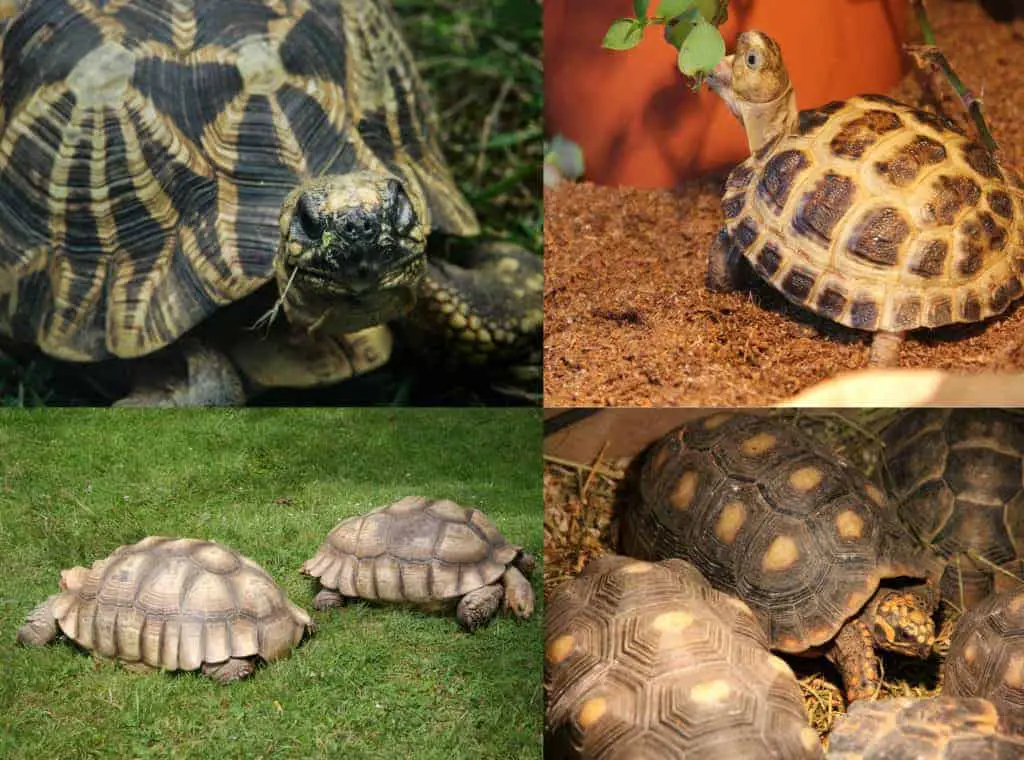
I’ve got to be a little bit careful discussing what the ‘easiest’ breeds of tortoise to look after are, for the simple reason that there isn’t really one. All tortoises require a significant amount of care, particularly with regard to nutrition, heat, ultraviolet light, and in a great deal of cases, hibernation.
That being said, it is fair to say that certain tortoises are widely considered to be more difficult to look after than others, so maybe the title to this article should really be ‘Which are the hardest tortoises to look after’.

Part of the problem with trying to come up with a clear answer to what constitutes a reasonably owner friendly tortoise, is that what one person considers to be a manageable trait, might not be seen in the same way for someone else. So the best way to determine what might be ‘easier’ for you is to have a look at a few breeds that people broadly consider ‘difficult’ and a few broadly considered ‘easier’.
Tortoises That Are Difficult to Look After
Indian Star Tortoise
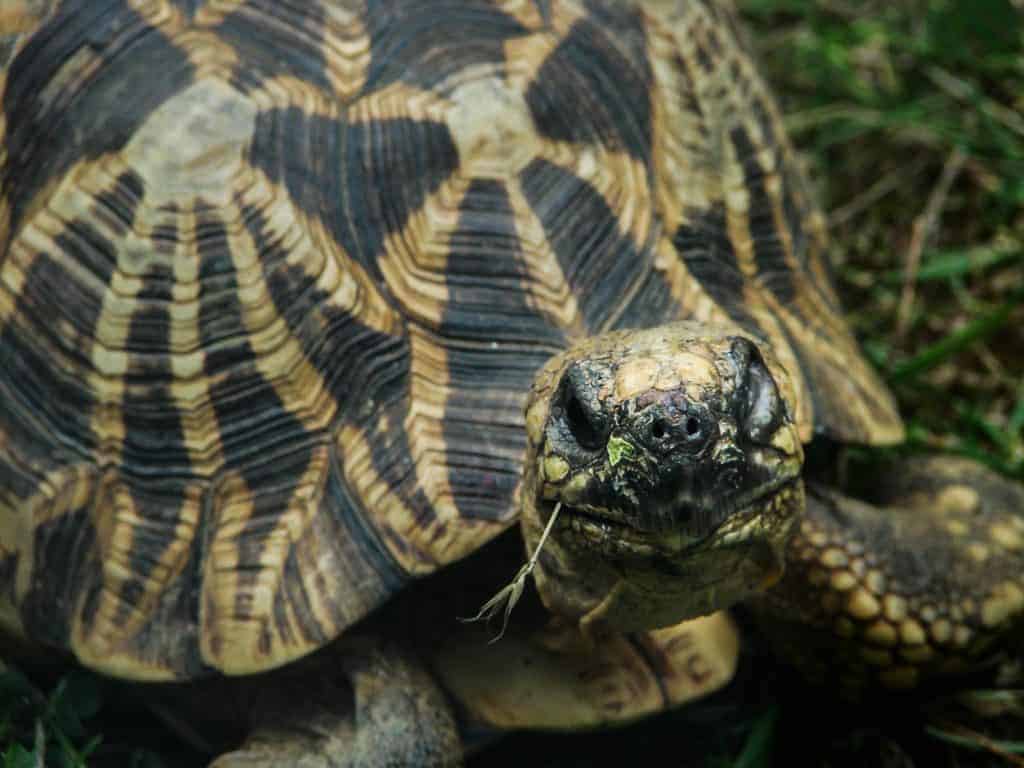
If we start with the low hanging fruit first, Indian Star Tortoises are widely considered to be one of the most difficult breeds of tortoise to look after. The main reason for this is their propensity to develop respiratory infections, which have proven fatal for many kept in captivity over the years.
This is believed to happen when their environment is both cold and damp at the same time. Hailing from a region that experiences the extremes of a very wet and a very hot/dry season means that Indian Stars benefit from both heat and considerable humidity. However this can catch you out if you don’t keep them dry during cold conditions, because this is what can make them ill.
Making sure your set-up is versatile enough to provide humidity and dry conditions in equal measure is important for making sure an Indian Star stays healthy, particularly for outdoor enclosures in non tropical climates such as here in the UK.
On the other hand Indian Stars have a calm temperament which makes them ideal for keeping in groups of two or more. Many other species are known to be aggressive with one another when kept in close quarters, so in this respect Indian Stars come out ahead of the pack.
Red Foot Tortoise
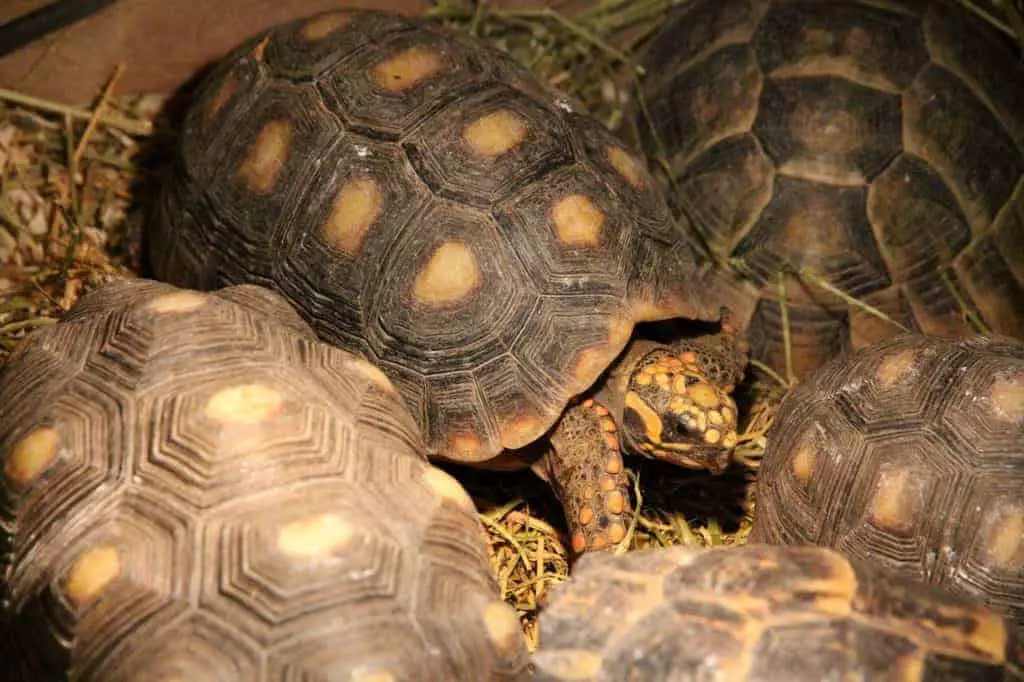
Being a tropical species means that Red Foot tortoises are slightly easier to manage than many of the sub tropical varieties of tortoise for the simple reason that they don’t need to hibernate.
The only reason I would class them as a little more hands on or ‘difficult’ than other species is that they aren’t really foragers. So whether you keep them indoors or outdoors you’ll need to provide them with all the food they need on a daily basis, which incidentally includes a little bit more protein in the form of an earthworm or mouse on occasion.
Tropical tortoises such as Red Foots also prefer a warmer ambient daytime temperature if possible making them suited to captivity in warmer parts of the world, although they are known for being more than happy at a range of temperatures. Reportedly they can tolerate night time lows of 7°C (45 °F) and daytime highs of 46°C (115°F) provided adequate shade and shelter are provided.
Tortoises That Are Easier to Look After (Generally Speaking!)
African Spurred Tortoise (Sulcata Tortoise)
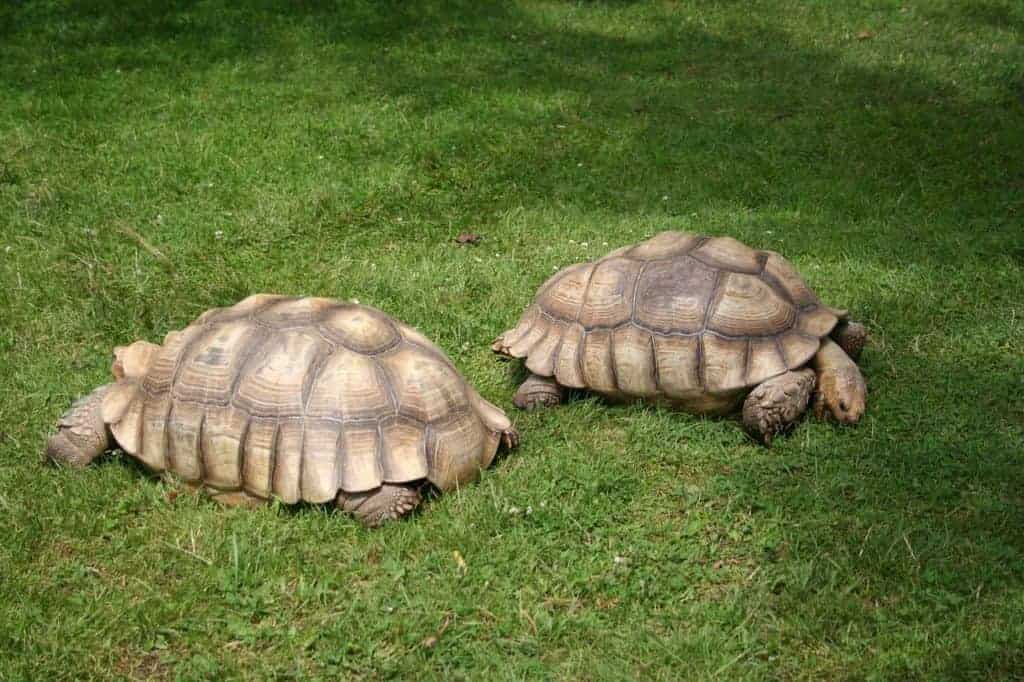
As one of the largest tortoise breeds on the planet (up to 33” or 83cm in fully grown adults) Sulcata tortoises certainly aren’t suitable for everyone because they require a considerable amount of space, and are very heavy.
At the same time Sulcatas will quite happily graze on grass, which as it happens contains almost everything they need to meet their dietary requirements. This makes them exceptionally simple to manage from a feeding perspective, being more like livestock than pets.
Being from the south of the Sahara desert means that Sulcata tortoises don’t hibernate, so there’s no work for you to do in this respect either.
That’s not to say that Sulcatas don’t have many of the other tortoise specific requirements as other breeds, especially with regards to temperature, because they most certainly do.
Hermann’s Tortoise
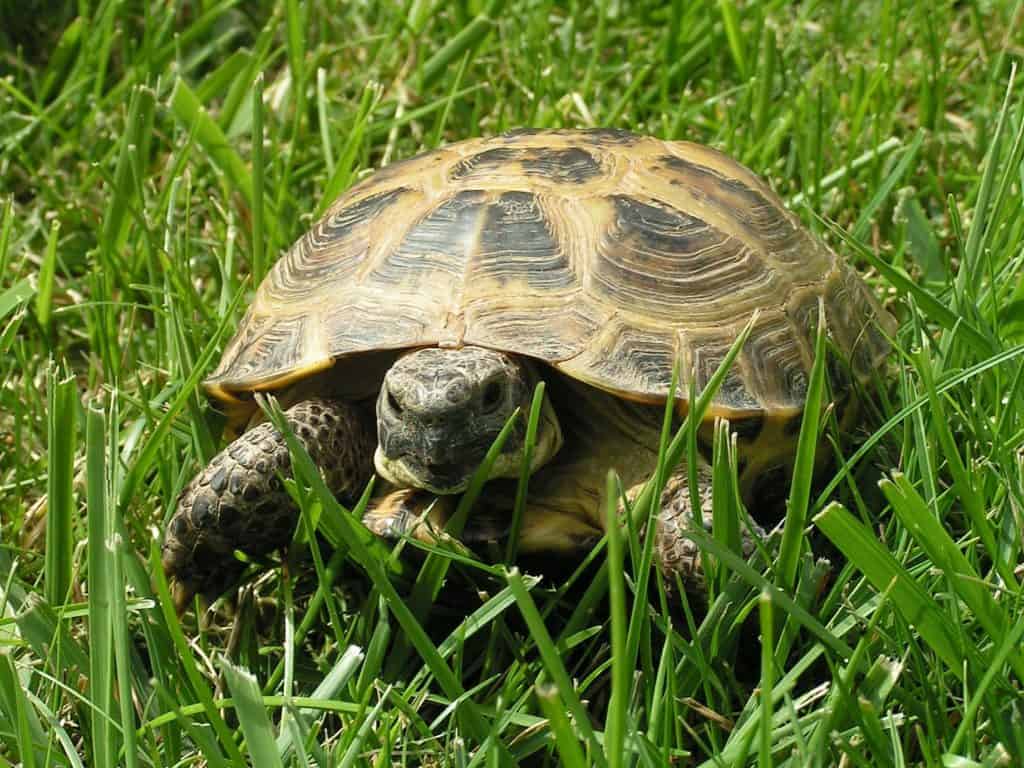
I might be a little biased with this one seeing as Hermann’s are the breed I personally have the most experience with, but I do firmly believe they are a great ‘beginners’ breed.
Hermann’s rank about average in terms of their hardiness, but they have the advantage of not growing as large as something like a Sulcata tortoise, whilst still being somewhat of a foraging species. Having said that I would still provide more than just the grass in their enclosure for them to eat, unless there are plenty of wild dandelions present. Supplementing with leafy green vegetables is enough.
Hermann’s do thrive when kept outdoors, so they’re not suited to being an indoors species, although in truth no tortoise really does, so you will need the space to house them, although again this won’t be as much as a larger species such as a Sulcata.
Hermann’s tortoises are a hibernating species, so there is a little more work to be done to accommodate this.
Russian Tortoise (Horsefields Tortoise)
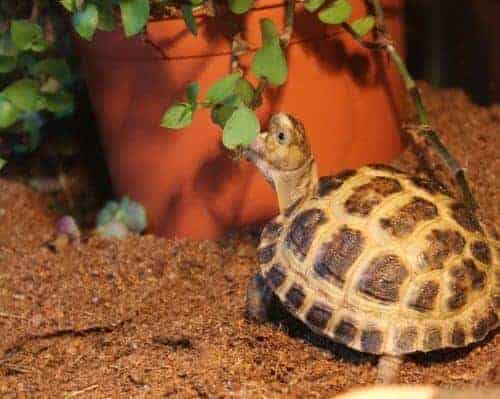
In many respects Russian tortoises are much like any other small tortoise. They have similar requirements to a species such as a Hermann’s in terms of habitat and hibernation, which some might consider ‘difficult’ but these are fairly universal requirements unless you buy a tropical tortoise.
The only slight difference that Russian tortoises don’t need to hibernate in order to stay healthy, therefore over wintering them instead of hibernating them is an option if you don’t want the responsibility of hibernating your tortoise.
A Question of Location and Circumstance
As you can probably now see there isn’t really an ‘easier’ breed of tortoise across the board. What constitutes an easier to manage tortoise will vary depending on several factors, including:
- Where you live in the world, in particular with regards to temperature and humidity, and what additional provisions you might need to make to accommodate your tortoise’s needs in these respects if you live outside of their natural climate
- How much space you have; for example Sulcata tortoises might be grazers who can be left to their own devices almost all of the time, but unless you’ve got a nice large grassy open space for them to live, caring for them becomes almost impossible
- What your predetermined expectations of tortoise husbandry were or are. For example hibernation is widely regarded as a fair challenge to get right, especially to the novice tortoise owner, but if you believed this was always going to be part of the deal, would it really be considered a ‘hardship’ when the time came to do it? As it happens of course, some species do not need to hibernate at all, so you might find keeping one of these far easier than you might have otherwise prepared for..

